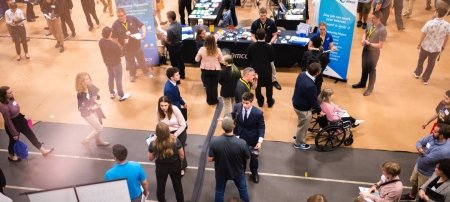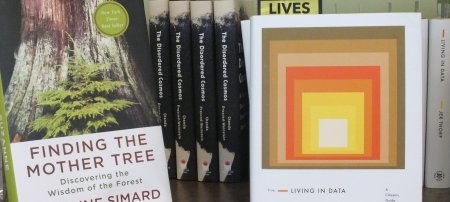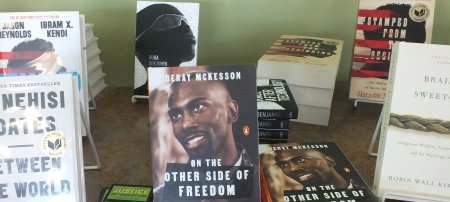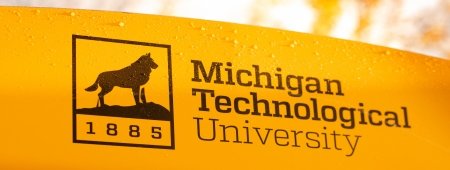Kurt and Bernard Vonnegut struggle to balance fame with responsibility as their research and innovations travel down a dark and unexpected path to uncovers a lesson many researchers can relate to.
Can the weather be controlled? Imagine a world where weather was no longer a concern: weatherman become irrelevant, parades proceed without rain to fall on them and picnics, on hot summer days, go uninterrupted for all to enjoy. Imagine the ability to travel anywhere in the world without fear of delays, cancellations or closings, or perhaps even a world where it snows on New Year’s at exactly midnight, in every state, from Maine to California. Imagine long Houghton winters spent at the beach in shorts and sunscreen instead of next to the radiator.
This may seem crazy, but for General Electric engineer Bernard Vonnegut and his brother, then PR rep Kurt, this dream would fuel their exploration into the great wonders and mysteries of science and the environment around them. Their research would go on to influence generations of scientists after them, challenge what was previously known about the weather and inspire a visiting author to share their story with the research community at Michigan Technological University.
Ginger Strand visited Michigan Technological University in mid-October to deliver a presentation regarding her new book: The Brothers Vonnegut: Science and Fiction in the House of Magic. Her work, a nonfiction account of the Vonnegut's’ famous sci-fi and real science, explains the moral and scientific obligations researchers have to the betterment of the world around them.
"Science is magic that works.
Two Brothers, the Weather and the Military
In the wake of World War II and the introduction of the atomic bomb, the world stood in wait for the next “Super Weapon.” The US set their eyes towards the skies, more specifically, the weather. The power of hurricanes rivals that of nuclear weaponry, and with this power, bombing enemies would seem like prehistoric bows and arrows. Physical battlegrounds could be changed to suit the needs and wants of commanding officers, ushering in a new era of warfare.
Enter the Vonneguts. At the General Electric research laboratory, Bernard discovered the process of cloud seeding and its ability to manipulate the weather.
He found that by introducing silver iodine to cloud structures it could act as nucleating agent, inducing rain, snow or hail. However, precipitation is just a small example of the true power of this research. Cloud seeding could nudge the weather in such a way that, theoretically, humans could change the weather around them to their suiting. This concept immediately caught the attention of military interest groups who saw Bernard’s work as a revolution in military weaponry.
Ginger Strand: Writer, Researcher, Storyteller
Strand says the Vonnegut brothers show the true impact that science can have on the world and the responsibility of innovators to shape the future of the planet.
“I think it's in our nature as human beings to constantly want to believe that we've figured out a way of not only controlling the planet and our environment, but of getting past these biological realities that are hard for us to accept,” Strand says., “In the case of the Vonnegut Brothers, I was intrigued by it because it’s the story of the human desire to control nature with the weather.”
The narrative of playing God is older than science itself. From the ancient story of Icarus to the more modern story of Mary Shelley's Frankenstein, Strand explores the moral and career aspirations surround “Big Science” and what it means for the rest of us down on earth.
“Many of the moments in history that I’m attracted to are these moments where people believe that mankind, to use the gender specific term, are on the verge of controlling nature,” she says, “the moments where we believe we are finally on the verge of having a handle on this thing--, and then I realize that every moment is that moment.”
"I really enjoy looking for the stories that nobody else wanted to tell."
The real-life story of these brothers and the military adoption of Bernard's technology sends a strong message to the scientific community: responsibility is not an attribute to sacrifice for greatness. For Kurt and Bernard, this attribute of modesty and general and intrigue in their own work would prove to make them true scientist, more than any amount of degrees or publications could.
“I think that’s why we are so attracted to this story of the Vonneguts,” Strand says, “because both brothers, who both had science backgrounds, brought to their work a sense of humility.”
Houghton, MI: Home to the Next Vonnegut Brothers?
The story of the Vonnegut brothers, as told by Strand, presents situations and themes that many Michigan Tech students could come face-to-face with in their future careers. Learning to navigate attention, controversy and careers is why this story is particularly pertinent to students, because it reflects situations and circumstances that many engineers find themselves in, at some point, in their career. While most won’t find themselves in the clouds building super weapons, the message still remains.
Strand says she wanted readers to understand how fascinating science is and how much it influences other parts of culture. Although, that's something she thinks most people at a school like Michigan Tech already know.
“So I think, for the students here, it's more about the other side: here’s how some really smart people have thought about some difficult questions,” Strand says. “Here's how two brothers, who were both coming out of a science background thought about being a scientist, and thought hard about it for their entire lives.”
Strand explains that students could relate more to the work of the Vonnegut brothers than most people with little knowledge or background in science. While ingenuity is exciting, the Vonnegut brothers struggled with their work and its morality for basically their whole lives, which shows the depth and seriousness that can accompany a career in STEM.
Students must be well-rounded. This means more than playing a sport or being involved in extracurricular activities. Being well-rounded is about going beyond niche knowledge, where unobserved bias can grow, and nipping bias at the bud by learning to see through many lenses.
To Strand, this starts with blending humanities and sciences, two fields typically seen to be at odds with each other. They actually have more in common than one might think.
“Your basic arts students should be more scientifically aware, and your basic science student should be comfortable going into a room and talking about ethics and talking about subjects that are not black and white,” Strand says.
This separation highlights the lack of objectivity, and thus a partial understanding of a much larger picture. But, in the modern world, how do science and ethics mix?
Morals, Morals on the Wall, Who’s the Most Righteous of Them All?
At one point in his career, Kurt Vonnegut even suggested the concept of a Hippocratic oath designed for scientists and engineers with the idea in mind to do no harm. But, like pure objectivity, it’s tough to imagine dedication to science and dedication to morals perfectly harmonize.
“Can you be human being and be 100-percent moral at the same time?” Strand counters,
saying that the answer, of course, is yes and no. “No one is perfect and you're constantly
going to make mistakes, but I think you're behaving morally as long as you are keeping
yourself open to the possibility of your mistakes and to thinking about what it is
that you're doing. I believe many scientists behave this way and are very passionate
about what they believe in and very passionate about making the world a better place.”
Science, by its very nature, is filled with mistakes. Risk is an essential part of
discovery, without risk of failure or mistakes the world would not have such inventions
as the lightbulb, telephone, or camera. Discovery is the ability to push away the
shrouds of darkness which envelopes the unexplored corners of the universe. This makes
science an art, a free flow of expression and feelings, because it is a balance of
the hard truths and facts of reality blended with the fascination, imagination, and
child-like amazement of the universe we call home. This is what made Bernard’s life
and works so important for others, not only as a lesson in morality, but also as a
guiding beacon. Bernard had to change his views on morality in the face of exploitation,
saying how he “was very focused on keeping in mind that his first duty was to other
human beings and that he might not understand. Not only might he not be able to control
the weather but he might not even fully understand it.”
MB: “Is it ok to make moral mistakes, as a scientist? And from those mistakes, is there a chance at redemption?”
GS: “I think so. Take the most obvious example, the invention of the atomic bomb, where all these scientists got together and worked very hard and changed the world. Oppenheimer once said ‘now scientist know sin’ but they immediately created an organization, the Association of Atomic Scientists, to try to work together to figure out the ethical implications and how to move forward, societally after this thing had been unleashed. So yes, I think you can come back. It was by no means a black and white question.”
Actions are like throwing a stone into a calm lake. While the initial splash may seem instantaneous, the effects our decisions have on the world around us ripple long and far from where the stone made contact with the lake. This idea should not put any additional pressure on researchers and scientists, but rather open a new door to unveil a new perspective on the world. Morals and ethics can walk hand in hand with the hard realities of science and research to explore the unknown. The outcomes, consequences and responsibility of these decisions and choices are up to us.
"With great power, comes great responsibility.”"
Michigan Technological University is an R1 public research university founded in 1885 in Houghton, and is home to nearly 7,500 students from more than 60 countries around the world. Consistently ranked among the best universities in the country for return on investment, Michigan's flagship technological university offers more than 185 undergraduate and graduate degree programs in science and technology, engineering, computing, forestry, business, health professions, humanities, mathematics, social sciences, and the arts. The rural campus is situated just miles from Lake Superior in Michigan's Upper Peninsula, offering year-round opportunities for outdoor adventure.






Comments